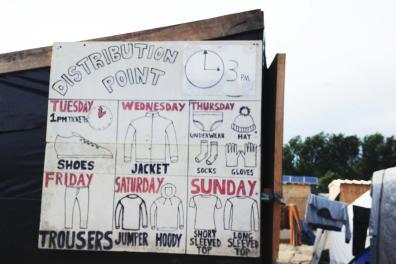The Migrobjets program

The Migrobjets program: Representation and circulation of objects from the material culture of exiles in new media and the construction of the figure of the migrant in public space, presented as part of the AAP Migrations & Altérité (April 2016-May 2018) of the Inalco Scientific Council, has just been closed.
Co-directed by Peter Stockinger and Alexandra Galitzine-Loumpet, it brought together a multidisciplinary team of researchers from the Plidam (Inalco) and Cessma (Inalco / Paris Diderot / IRD) laboratories, the université catholique de l'Ouest, the university of Porto and members of the program Non-lieux de l'exil, specialists in information and communication, semiotics, anthropology, geography, languages and literature, philosophy and aesthetics. Its aim was to study the circulation, distribution and modes of representation of images and objects of the migratory experience in the media and social networks. The omnipresence of images of objects in the media relating to migration and migrants is clear to see. The diversity of these object representations raises questions, as does the paucity of studies devoted to the material culture of migration to date.
Yet objects reveal the body and the journey; know-how and strategies in a context of scarcity and marginalization; social uses; attachment and dispossession; countries of origin, journey and arrival; the economy of passage; forms of institutional coercion and control; donations and humanitarian aid; actions, citizen commitments and resistance, primarily on the part of exiles; the conditions and status of subjects; future forms of heritage and the musealization of current migrations. Their staging appears central, distinguishing objects in relation to subjects (worn, held, commented on) or, on the contrary, images of objects abandoned at borders or on beaches; singularized and isolated objects from objects in heaps or masses; usable objects from degraded or confiscated objects.
.
These representations of objects, whose function is to attest or denounce a presence, thus signal a wide diversity of complementary or opposing positions and appreciations. Singularized, object representations enable recognition linked to a community of use of consumer goods. This recognition is built in parallel with the suspicion surrounding the word of people designated as "migrants", subject to a regime of proof in the asylum application procedure. Presented in large numbers, these images of objects reinforce a representation of the migratory "crisis" and reception policies, reinforcing a semantic field of urgency but also of an uncontrollable "flow". The shift from migrants to waste is easy to make. Studies have focused on the ambivalence of these intersecting representations, in which the same object carries a discourse and positions that are favorable or hostile, depending on the forms of monstration and connotation, particularly in the relationship between images of objects and texts or press chapters.
The team members each chose an object, emblematic or rare, and analyzed it. They studied the frequency of images of gendered or age-related objects - toys or schoolchildren's backpacks -, associations between categories of objects or with a place (camps, borders, beaches, centers); the substitution of objects for migrants' bodies; associated discourses (of people in migration, nationals of host countries) as relayed in the media landscape; the way they reinforce and update an older topo of the migrant and the foreigner.
The results of the work were presented at three study days and a closing international symposium (May 22-23, 2018), in collaboration with various academic and associative partners. Two publications are in progress, the first in collaboration with the Centre Espaces et écritures (University of Nanterre) with that institution's university press, the second in preparation, of the proceedings of the rich terminal colloquium. Finally, the Migrobjets program conducted a series of audiovisual interviews with researchers and actors working with migrants, around an object available in a dedicated collection on MediHal / AAI. The program has set up a monitoring observatory, published articles or blog posts and presented its work at various external colloquia and seminars. The dedicated research notebook (https://migrobjets.hypotheses.org/) and a facebook page report on this work.
Alexandra Galitzine-Loumpet